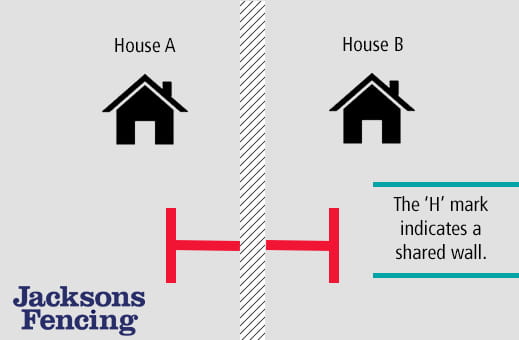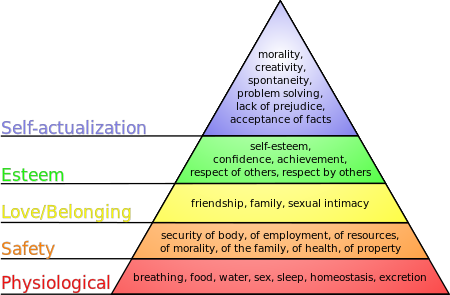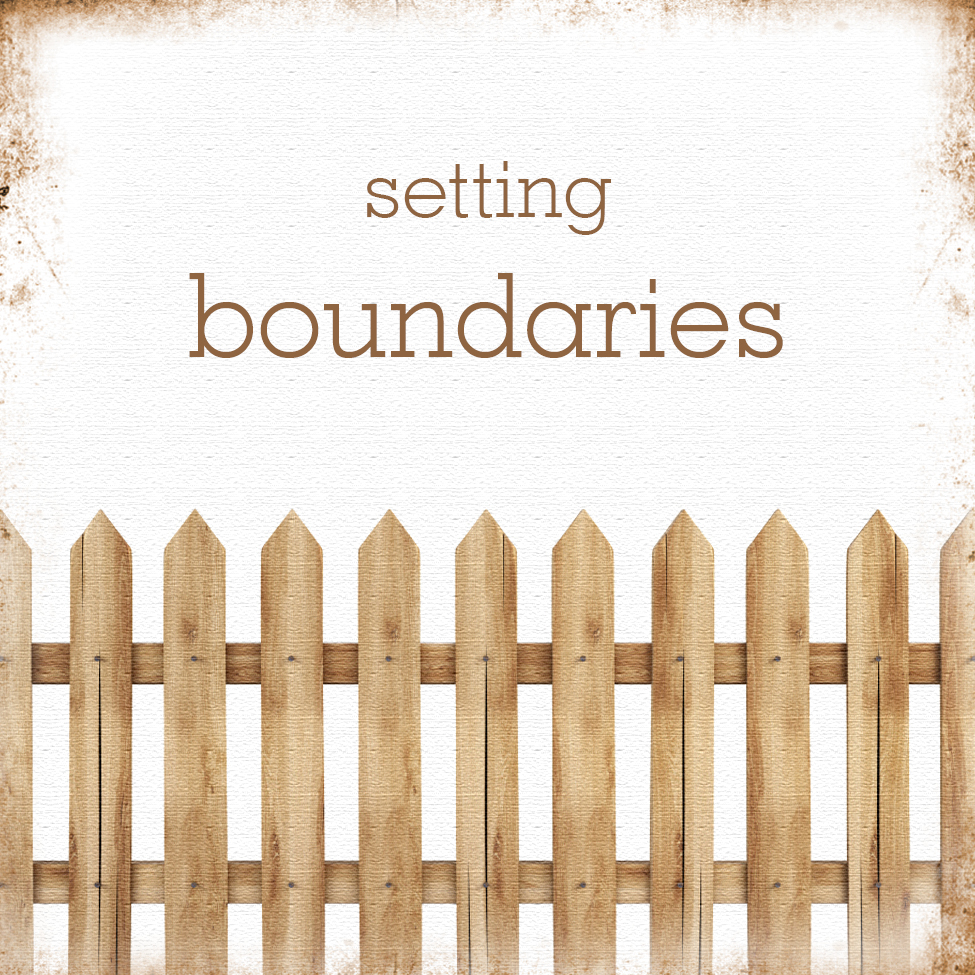Have you ever wondered about the role of fences in establishing boundaries? They’re not just physical barriers; they play a crucial role in defining and separating spaces. In this article, we’ll delve into the topic in detail and explore the various aspects of fences that you may not have considered before.
From the different types of materials used in constructing fences to the regulations and guidelines surrounding fence installation, we’ll cover it all. You’ll also discover the importance of proper fence maintenance and how it can contribute to the longevity and effectiveness of your fence. So whether you’re a homeowner looking to install a new fence or simply curious about the impact of fences on dividing spaces, read on to learn more!
The Role of Fences in Establishing Boundaries

The Importance of Fences
Fences play a crucial role in our lives, both at home and in public spaces. They serve various purposes, ranging from enhancing security and privacy to promoting property boundaries. Fences act as visual barriers, landscape enhancers, animal enclosures, and even as safety measures. Understanding the different types of fences, how to choose the right one, how to install and maintain it, and the legal considerations surrounding fence installations are vital aspects to consider. In this article, we will explore the various roles that fences play and provide valuable insights into all aspects of fences.
Enhancing Security and Privacy with Fences
One of the primary purposes of fences is to provide security and privacy for homeowners and property owners. By installing a fence around your property, you establish a clear boundary that deters trespassers and unwanted visitors. Fences act as a physical barrier, preventing unauthorized access and increasing the overall security of your premises. Additionally, fences offer privacy by obstructing the view from outside, allowing you to enjoy your personal space without prying eyes.

Promoting Property Boundaries through Fences
Fences play a vital role in defining property boundaries, preventing encroachments, and avoiding disputes with neighbors. By clearly marking your property with a fence, you establish a visual and physical boundary that ensures everyone understands the limits of each property. This not only helps maintain healthy neighborly relationships but also serves as legal evidence in case of any boundary disputes.
Fences as a Visual Barrier and Landscape Enhancer
Apart from their functional benefits, fences also offer aesthetic value by serving as visual barriers and enhancing the overall landscape of a property. Well-designed fences can complement the architectural style of your home or blend into the natural surroundings. They can be adorned with decorative elements and plants to create an inviting atmosphere and add beauty to your property.

Increasing Safety with Fences
In addition to providing security, fences contribute to increasing safety. They act as a barrier, preventing children and pets from wandering off or accessing hazardous areas such as swimming pools, busy streets, or construction sites. Installing a fence around these areas ensures the safety of your loved ones and offers peace of mind.
Fences as Animal Enclosures
Fences are commonly used to create safe and secure enclosures for animals. Whether it’s a backyard for your pet dog or a larger enclosure for livestock on a farm, fences help keep animals contained and protected. They prevent animals from straying and getting lost or injured, ensuring their well-being and allowing you to better manage their movements.

Different Types of Fences
When it comes to choosing the right fence for your needs, it is essential to understand the different types available in the market. Each type has its unique characteristics, benefits, and considerations. Let’s explore some of the most popular types of fences:
Exploring Wooden Fences
Wooden fences are classic and widely used for their natural beauty and versatility. They come in various styles, such as picket fences, privacy fences, and split rail fences. Wooden fences require regular maintenance, including staining and sealing, to ensure their longevity and aesthetics.
Understanding Chain Link Fences
Chain link fences are known for their durability, affordability, and low maintenance. They are made of interlocking steel wires and provide security without obstructing the view. Chain link fences are commonly used for residential, commercial, and recreational purposes, including securing yards, playgrounds, and sports fields.
The Benefits of Vinyl Fences
Vinyl fences have gained popularity in recent years due to their durability, low maintenance, and aesthetic appeal. They are available in various styles and colors, offering homeowners the flexibility to find the perfect match for their property. Vinyl fences are resistant to pests, rot, and weather conditions, making them an excellent long-term investment.
Elegant Wrought Iron Fences
Wrought iron fences exude elegance and timeless charm. They are known for their strength, durability, and decorative elements. Wrought iron fences can be customized to fit any architectural style and are often used to enhance the aesthetic appeal of properties while providing security.
Unique Bamboo Fencing
Bamboo fencing is an eco-friendly alternative that offers a natural and exotic look to any property. Bamboo is a sustainable material that grows quickly, making it an environmentally friendly choice for fencing. It provides privacy and can be used to create a tropical ambiance in gardens and outdoor spaces.
Innovative Composite Fencing
Composite fencing is a modern and environmentally friendly option that combines wood fibers and recycled plastic. It offers the look of wood without the maintenance requirements, as it is resistant to rot, insects, and fading. Composite fences come in various styles and colors, allowing homeowners to customize their fences to suit their preferences.
Choosing the Right Fence
Choosing the right fence for your property can be a challenging task. Several factors should be considered to ensure you make an informed decision. Let’s explore the essential factors when selecting a fence:
Factors to Consider when Selecting a Fence
When choosing a fence, consider factors such as the purpose of the fence, your budget, the level of maintenance required, and the overall aesthetics. Each factor will help narrow down the options and lead you to the fence that best suits your needs.
Matching Fences with Architectural Style
It is crucial to select a fence that complements the architectural style of your home and the surrounding environment. A fence that harmonizes with the overall aesthetics creates a cohesive and visually pleasing look.
Considering Maintenance and Longevity of Fences
The level of maintenance required and the lifespan of a fence will differ based on the materials used. Consider your willingness to invest time and effort in fence maintenance and select a fence that aligns with your maintenance capabilities.

Installing a Fence
Once you have chosen the right fence for your needs, the next step is the installation process. Proper installation ensures the functionality and longevity of the fence. Depending on your skills and preferences, you can opt for a DIY fence installation or hire professionals to do the job.
Step-by-Step Guide for DIY Fence Installation
If you decide to take the DIY route, follow this step-by-step guide for a successful fence installation. It covers important aspects such as measuring and marking the area, digging post holes, installing posts and panels, and finishing touches.
Hiring Professionals for Fence Installation
If you are not confident in your DIY skills or prefer to leave the job to experts, hiring professionals for fence installation is a wise choice. They have the knowledge, experience, and tools necessary to ensure a proper and efficient installation.
Understanding Local Building Codes for Fences
Before installing a fence, it is essential to research and familiarize yourself with the local building codes and regulations. Some areas have specific requirements regarding fence height, materials, and placement. Adhering to these regulations is crucial to avoid any legal issues or potential penalties.
Maintaining and Repairing Fences
Proper maintenance and timely repairs are vital to maximize the lifespan of your fence. Regular maintenance ensures that the fence remains in good condition, preventing costly repairs or replacements. Let’s explore some effective maintenance tips and common fence repairs:
Effective Fence Maintenance Tips
Maintaining your fence involves various tasks, such as regular cleaning, inspection for damage, treating wood fences, and replacing broken components. These simple maintenance tips will help keep your fence in optimal condition and prolong its lifespan.
Dealing with Common Fence Repairs
Despite proper maintenance, fences may require repairs due to wear and tear, weather damage, or accidents. Common fence repairs include fixing loose posts, replacing damaged panels, and repairing gate mechanisms. Knowing how to address these issues promptly can prevent further damage and ensure the structural integrity of your fence.
Maximizing the Lifespan of Your Fence
By implementing regular maintenance practices, promptly addressing repairs, and taking proactive measures to protect your fence from common hazards, you can maximize its lifespan. A well-maintained fence not only serves its intended purpose but also preserves the beauty and value of your property.
Decorative and Functional Fence Ideas
Fences can be more than utilitarian structures. They offer a canvas for creativity and allow homeowners to express their personality and style. Let’s explore some creative and functional fence ideas:
Creative Ways to Decorate and Personalize Fences
Decorating and personalizing your fence can add a unique touch to your property. From painting the fence in vibrant colors to attaching decorative elements and hanging artwork, there are countless ways to make your fence stand out and reflect your individuality.
Functional Fence Ideas for Gardens and Yards
In addition to aesthetics, fences can serve specific functional purposes in gardens and yards. Options such as trellis fences for climbing plants, herb garden fences, and raised garden bed fences offer practical solutions while enhancing the overall landscape.
Utilizing Fences as Vertical Garden Support
Fences can also serve as support structures for vertical gardens. By attaching planter boxes, hanging baskets, or using trellises, you can create a lush and green fence that adds beauty and maximizes space in your outdoor area.
Legal Considerations for Fences
Before embarking on a fence installation project, it is essential to be aware of the legal considerations and requirements. Failing to comply with local regulations and boundaries can lead to disputes with neighbors or potential legal issues. Let’s explore some of the legal aspects of fence installations:
Property Laws and Fence Installations
Understanding property laws in your area is crucial when installing a fence. These laws govern property boundaries, fence heights, setback requirements, and any applicable permits or approvals. Being knowledgeable about property laws ensures that your fence installation is lawful and avoids any disputes.
Neighbor Disputes and Fence Etiquette
Fences can sometimes lead to disputes with neighbors, mainly if there are disagreements about property lines or the appearance of the fence. Respecting your neighbors’ concerns, engaging in open communication, and adhering to proper fence etiquette can help maintain positive relationships and avoid unnecessary conflicts.
Permits and Regulations for Fences
Some areas require permits or approvals for fence installations, especially for certain types of fences or when exceeding height restrictions. Familiarizing yourself with the local permit requirements and regulations ensures that you adhere to all necessary legal procedures and avoid potential fines or penalties.
Fences for Special Purposes
While fences primarily establish boundaries, they also serve specific purposes in various settings. Let’s explore some fence types designed for special purposes:
Pool Fences for Safety and Compliance
Pool fences are essential for maintaining safety and compliance with local regulations. They act as a physical barrier around the pool area, preventing accidental drownings and ensuring the well-being of children and pets. Pool fences should meet specific height and gate requirements to ensure maximum safety.
Farm Fences for Livestock Management
Farm fences are designed to contain livestock and prevent them from wandering off or becoming a danger to themselves or others. These fences come in various forms, including electric fences, barbed wire fences, and wooden fences, depending on the specific livestock and management requirements.
Privacy Fences for Urban Homes
Privacy fences are commonly used in urban areas to create private outdoor spaces and shield properties from the view of neighbors and passersby. These fences are typically tall, solid, and constructed with materials that provide optimum privacy.
Sound Barrier Fences for Noise Reduction
In noisy environments or areas near roadways, sound barrier fences can help reduce noise pollution. These fences are designed to absorb or deflect sound waves, offering a more peaceful and enjoyable living environment.
Environmental Impact of Fences
In an era of increasing environmental consciousness, it is essential to evaluate the environmental impact of different fence materials and construction methods. Let’s explore the environmental considerations related to fences:
Evaluating the Carbon Footprint of Different Fences
Different fence materials have varying carbon footprints, depending on the resources used in their production and the manufacturing processes involved. Evaluating the carbon footprint of different fences helps make environmentally conscious decisions.
Eco-Friendly Fencing Options
Eco-friendly fencing options prioritize sustainability, recyclability, and the use of renewable materials. Whether it’s bamboo, composite materials, or reclaimed wood, choosing eco-friendly fences minimizes the overall environmental impact.
Preserving Natural Habitats with Fences
Fences can also be used to preserve natural habitats and protect wildlife. Wildlife fences or habitat barriers help prevent encroachment into sensitive areas, ensuring the preservation of ecosystems and supporting biodiversity.
Fencing Tools and Equipment
Installing or repairing a fence requires the proper tools and equipment to ensure efficiency and precision. Let’s explore some essential tools for fence installation and advanced equipment for more extensive fence construction:
Essential Tools for Fence Installation
Basic tools required for fence installation include a measuring tape, level, post hole digger, shovel, string line, hammer, and saw. These tools help you accurately measure, dig post holes, level the fence, and ensure a sturdy installation.
Advanced Equipment for Fence Construction
For more extensive fence construction projects, advanced equipment such as a powered post hole auger, pneumatic nail guns, and circular saws can greatly enhance efficiency and productivity. Using the right equipment saves time and effort, ensuring a high-quality result.
Repurposing Fences
As fences age or are replaced, repurposing their materials can offer creative and sustainable solutions. Let’s explore some creative ways to repurpose old fencing materials:
Creative Ways to Repurpose Old Fencing Materials
Old fencing materials can be repurposed into various DIY projects, such as garden signs, picture frames, rustic furniture, or even art installations. Repurposing old materials not only reduces waste but also adds a unique touch to your home or garden.
DIY Projects Using Salvaged Fence Components
Salvaging fence components, such as wooden boards or metal panels, opens up opportunities for creative DIY projects. Building planter boxes, outdoor benches, or privacy screens using salvaged fence components can add character to your outdoor spaces.
Famous Fences of the World
Some fences have historical significance or architectural marvels that make them iconic and famous. Let’s explore the stories and significance behind some of the world’s most renowned fences:
Historical Significance and Stories Behind Famous Fences
From the Great Wall of China to the Berlin Wall, famous fences have played critical roles in history and continue to serve as reminders of human triumphs, struggles, and the quest for freedom. Uncovering the historical significance and stories behind these fences offers a deeper understanding of their importance.
Architectural Marvels in Fence Design
In addition to historical significance, some fences stand out for their architectural brilliance and innovative design. From contemporary masterpieces to ancient structures, exploring architectural marvels in fence design showcases human creativity and engineering prowess.
Cultural Perspectives on Fences
Fences hold symbolic and cultural meanings in different societies and have become representations of social divisions in some cases. Let’s explore the symbolism and meanings of fences in various cultures:
Symbolism and Meanings of Fences in Different Cultures
Fences can symbolize various concepts like protection, purity, spirituality, or social hierarchy, depending on cultural beliefs and traditions. Understanding the symbolism and meanings of fences in different cultures provides valuable insights into the significance they hold.
Fences as Representations of Social Divisions
In certain societies, fences can be seen as physical manifestations of social divisions or inequalities. They can serve as barriers that segregate communities or symbolize exclusion. Analyzing the role of fences as representations of social divisions helps foster dialogue and understanding.
Conclusion
Fences play a versatile role in our lives, establishing boundaries and serving various practical and aesthetic purposes. From enhancing security and privacy to defining property boundaries, promoting safety, and preserving natural habitats, fences are essential elements of our surroundings. By understanding the different types of fences, how to choose the right one for specific needs, how to install and maintain them, and the legal considerations tied to fence installations, individuals can make informed decisions and maximize the benefits of fences. Whether it’s ensuring security, enhancing the aesthetic appeal of a property, or contributing to environmental sustainability, fences truly have a significant impact on our lives and the world around us.